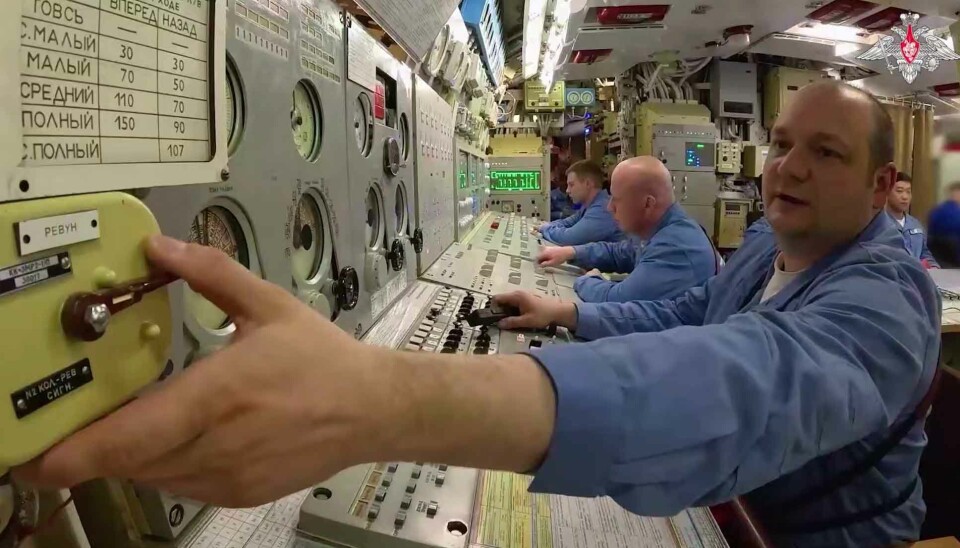
Centrepiece of Grom strategic nuclear exercise was a 40-year-old sub
Russia on October 22 tested all three legs of its nuclear triad as part of the annual Grom (Thunder) strategic nuclear drills. An upgraded submarine from the 1980s played a key role.
According to the Kremlin, the Bryansk, a nuclear submarine of the Delta IV class, fired a Sineva ballistic missile from the Barents Sea. At the same time, a Yars ballistic missile was fired from the Plesetsk cosmodrome towards the Kura missile test range on the far eastern Kamchatka Peninsula, and Tu-95MS strategic bombers fired cruise missiles.
Presumably, also the Sineva missile fired by the Bryansk was aimed at the far eastern Kura test range.
All three legs of the Russian nuclear triad were tested. But it is not clear if the exercise was successful.
"All training tasks have been completed," the Kremlin reports.
Vladimir Putin followed the exercise from his so-called situation centre in the Kremlin. Minister of war Andrei Belousov and chief of the general staff Valery Gerasimov updated the dictator on developments.
The Grom (Thunder) is an annual exercise normally conducted in October. Ahead of the drills, parts of the airspace over the Barents Sea had been closed off for air traffic.
It was the Bryansk, and not one of Russia's new submarines, that was involved in this year's exercise. The submarine was originally built in the mid-1980s and returned to service in the Navy in 2025 after a six-year period of upgrades.
The Delta-IV class vessel is one of the oldest nuclear-powered submarines in operation with the Russian navy. Her homeport is Gadzhiyevo on the Kola Peninsula, some 100 kilometres east of the border with Norway.
















